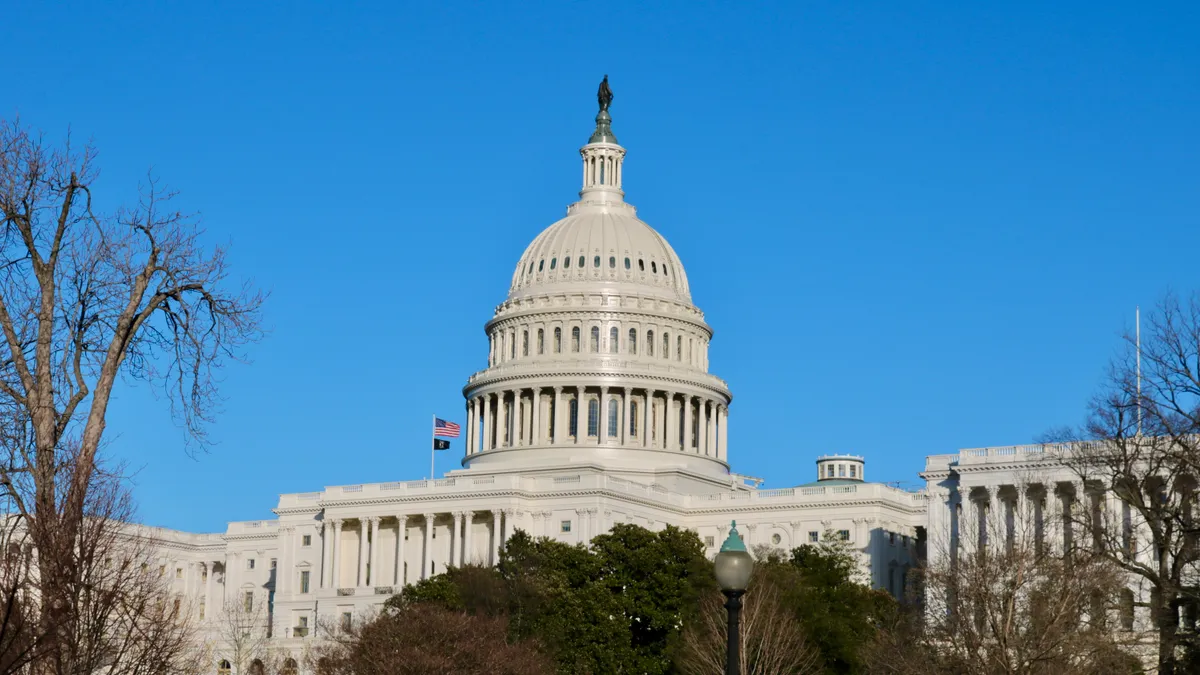More than a decade ago, Congress effectively banned what are known as earmarks from discretionary federal budgeting.
These are individual representatives' funding requests for projects, such as a new facility or a program tagged onto spending proposals.
Decried as pork-barrel spending or pet projects, earmarks got the chop in 2011 following a series of controversies — most notoriously the so-called Bridge to Nowhere, which would have linked the small, Alaskan city of Ketchikan to an airport on nearby Gravina Island and had secured a $223 million earmark.
The now-defunct project came to symbolize wasteful government spending, as critics argued the bridge would have helped few people. The late Arizona Sen. John McCain and former Alaska Gov. Sarah Palin, both Republicans, even used the bridge as a frequent talking point in their unsuccessful White House bid.
But earmarks are back — a boon for higher education, said Jonathan Fansmith, assistant vice president for government relations at the sector's top lobbying association, the American Council on Education.
Earmarks are now known formally as "community-project funding" in the House of Representatives and "Congressionally directed spending" in the Senate. Federal lawmakers can request them under a stringent rule set, including that they can't have a financial stake in the projects and can only fund nonprofit or government entities.
Colleges have benefited from past earmark funding, which helped subsidize many construction projects and academic programs on campuses that are often "cities unto their own," Fansmith said. College earmarks are likely among the easiest sells now that the ban has lifted. Institutions weren't wrapped up in the scandals that led to earmarks' discontinuation, Fansmith said.
Congress folded earmarks — including for colleges — into the recent $1.5 trillion fiscal 2022 spending package President Joe Biden signed Tuesday, which also gave the U.S. Department of Education $76.4 billion in discretionary appropriations.
Colleges have to exercise care when requesting earmark funds from their representatives, Fansmith said. They only have so much political capital to spend and can't contact policymakers about every little project, he said. Fansmith expects next budget cycle, colleges will feel more comfortable with navigating earmarks, which House Democrats only revived last year. This budget was instead defined by big-ticket items such as a federal Pell Grant increase and bolstered research funding, Fansmith said.
Earmarks are popular among lawmakers. They can tout the projects as political wins and generate constituent goodwill, Fansmith said.
Higher Ed Dive identified more than 400 earmarks in the 2022 spending package for colleges and their affiliates, such as medical centers. They total more than $703 million.
They target initiatives such as workforce development opportunities, faculty recruitment and mental health treatment services. The earmarks range from tens of millions to tens of thousands of dollars.
We've outlined some of the largest earmarks below.
- $76 million for the University of Alabama at Birmingham School of Medicine to construct a new biomedical research building. The new facility would be home to about 60 lead researchers and their teams, who will work across interdisciplinary fields, from the study of cancer, neuroscience and cardiology to infectious and chronic diseases.
- $61 million for the Curators of the University of Missouri to construct and bring research equipment to the NextGen Precision Health Institute, a research facility on the Missouri public system's chief campus that will incorporate biomolecular, computational and engineering disciplines, as well as veterinary and human medicine.
- $50 million for the University of Alabama at Tuscaloosa to establish a permanent endowment fund to help with recruitment and retention of science and engineering faculty.
- $30 million for Missouri State University for a new health and life science center in its Temple Hall. The university's sciences enrollment has grown from 1,000 students to 2,400 students since the hall was constructed, and the new space will meet its College of Natural and Applied Sciences’ educational and research needs.
- $13 million for the University of Missouri-Kansas City to expand its medical school campus, which is quickly outgrowing classroom and laboratory space.
- $12.7 million for the Medical University of South Carolina to construct a new hospital and purchase medical equipment.
- $10 million for Stony Brook University, in New York, to create and lead a network of regional biomedical research institutions.
- $10 million for the University of Kansas Cancer Center to improve research capacity and upgrade technology.















